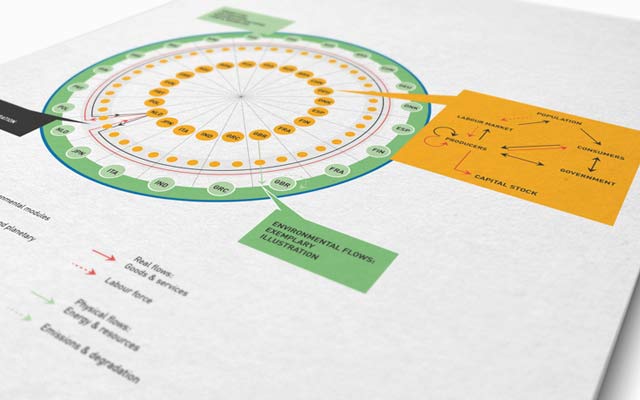GINFORS-E
The GINFORS-E (global inter-industry forecasting system – energy) model is a bilateral world trade model based on OECD data, which consistently and coherently models exports and imports of 25 goods groups for 64 countries and one ‘rest of the world' region. Macroeconomic drivers are taken from the TINFORGE model. GINFORS-E models energy balances and IEA CO2[nbsp]data to a high level of detail.
GINFORS-E incorporates a macro-model from TINFORGE, consisting of exports and imports, other core components of final demand (private and public sector consumption and investment), markets for goods and the labour market, for each country. For 64[nbsp]countries, the models are also divided into 36[nbsp]goods categories in accordance with the latest OECD internationally harmonised input-output tables.
Each national model is linked to an energy model, which determines energy conversion, energy generation and final demand for energy for 19[nbsp]energy sources disaggregated by economic sector. The model takes into account technological trends and price dependencies. It comprehensively models international trade in energy sources.
GINSFORS-E can be used to analyse the macroeconomic effects of a variety of energy price changes in individual countries and enables users to drill down into individual sectors. It flexibly models trade structures, labour markets, energy intensities and energy source structures, taking into account price dependencies and the situation in specific countries. The parameters used in the model equations are econometrically estimated on the basis of time-series data.
In recent years, the way the model deals with the energy sector has been further refined to take account of global developments in renewable energy technologies. The model has also started to be used to examine future changes in consumption-based greenhouse gas emissions, which is why the name has been extended to GINFORS-E.
Selected Publications
Projects


